IPPCAAS and Partners Reveal a New Mechanism by Which Viral Proteins Suppress Rice Immunity through Manipulating Liquid–Liquid Phase Separation
Prof. Zhou Xueping from the Institute of Plant Protection, Chinese Academy of Agricultural Sciences (IPPCAAS), together with Prof. Wu Jianxiang from Zhejiang University and Prof. Zhang Tong from South China Agricultural University, published a paper entitled “Viral proteins suppress rice defenses by boosting OsTSN1 RNA decay via phase separation and multimerization” in Nature Communications. The study revealed that viral proteins interact with the host factor OsTSN1 to form virus–OsTSN1 condensates through liquid–liquid phase separation (LLPS) and promote OsTSN1 multimerization, thereby enhancing its nuclease activity and RNA decay function. This process coordinately suppresses rice antiviral immunity mediated by autophagy and jasmonate signaling.
The study confirmed that the P6 protein encoded by southern rice black-streaked dwarf virus (SRBSDV) exhibits LLPS properties in the cytoplasm. Immunoprecipitation coupled with proteomics identified the RNA-binding protein OsTSN1 as a major interactor enriched in P6 condensates. P6 promoted OsTSN1 LLPS, leading to the formation of P6–OsTSN1 droplets localized in stress granules (SGs), where OsTSN1 played a critical role in localization. Genetic analysis showed that OsTSN1 overexpression increased rice susceptibility to SRBSDV, while OsTSN1 knockout significantly enhanced resistance, indicating that OsTSN1 negatively regulates antiviral immunity.
Further analysis demonstrated that OsTSN1 degrades single-stranded RNAs, and its nuclease activity positively correlates with multimerization. Within P6–OsTSN1 droplets, P6 enhanced OsTSN1 multimerization and nuclease activity. Crosslinking immunoprecipitation and RNA-seq identified OsTSN1 target transcripts containing GAGGAG motifs, including transcription factors OsNAC15 and OsLHY, which were specifically enriched and degraded in P6–OsTSN1 droplets. Functional assays revealed that OsNAC15 positively regulates autophagy-related gene OsATG8C, while OsLHY negatively regulates jasmonate pathway genes OsJAZ6/12. By degrading OsNAC15 and OsLHY transcripts, P6 suppresses autophagy while enhancing jasmonate signaling, jointly dampening antiviral defense.
Notably, the P6 protein of Rice black-streaked dwarf virus (RBSDV) and the NS3 protein of Rice stripe virus (RSV) also contain intrinsically disordered regions (IDRs), undergo LLPS, and interact with OsTSN1 to form virus–OsTSN1 droplets in SGs. Within these droplets, RBSDV P6 and RSV NS3 similarly promoted OsTSN1 multimerization and nuclease activity, enhancing RNA decay. OsTSN1 overexpression increased rice susceptibility to RBSDV and RSV, while knockout lines showed enhanced resistance, indicating that OsTSN1 also negatively regulates immunity to these viruses.
In summary, SRBSDV P6, RBSDV P6, and RSV NS3 all undergo LLPS and form virus–OsTSN1 condensates in stress granules. By promoting OsTSN1 multimerization and enhancing RNA decay, viral proteins degrade OsNAC15 and OsLHY transcripts, thereby suppressing autophagy and jasmonate-mediated immunity to facilitate infection. These findings highlight a convergent strategy among different rice viruses and provide new theoretical insights for breeding disease-resistant rice.
Dr. Zeng Ming (former PhD student, Zhejiang University) and Dr. Fu Shuai (former postdoctoral fellow, Zhejiang University) are co-first authors. Prof. Wu Jianxiang (Zhejiang University), Prof. Zhou Xueping (IPPCAAS), and Prof. Zhang Tong (South China Agricultural University) are co-corresponding authors. The study was supported by the National Key R&D Program of China, the National Natural Science Foundation of China, and the China Agriculture Research System.
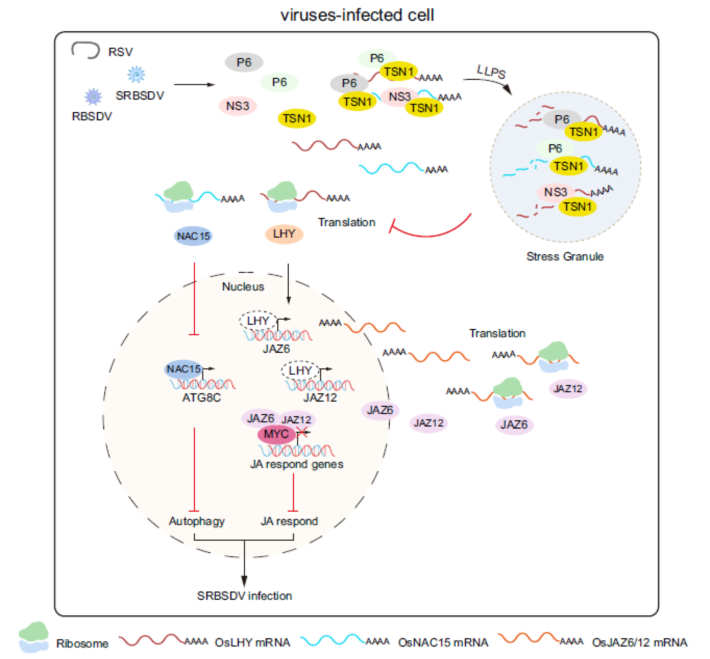
-
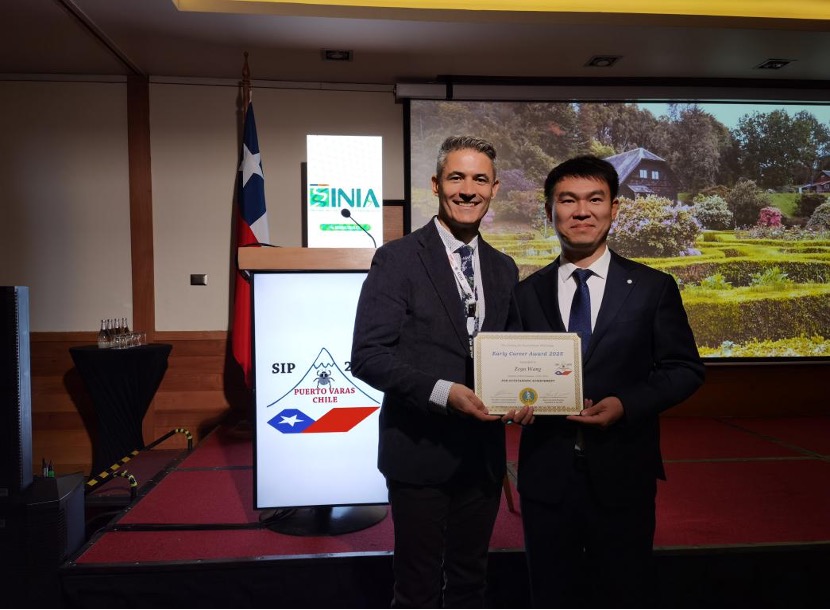 IPPCAAS Expert Wins the Society for Invertebrate Pathology Early Career Award
IPPCAAS Expert Wins the Society for Invertebrate Pathology Early Career Award -
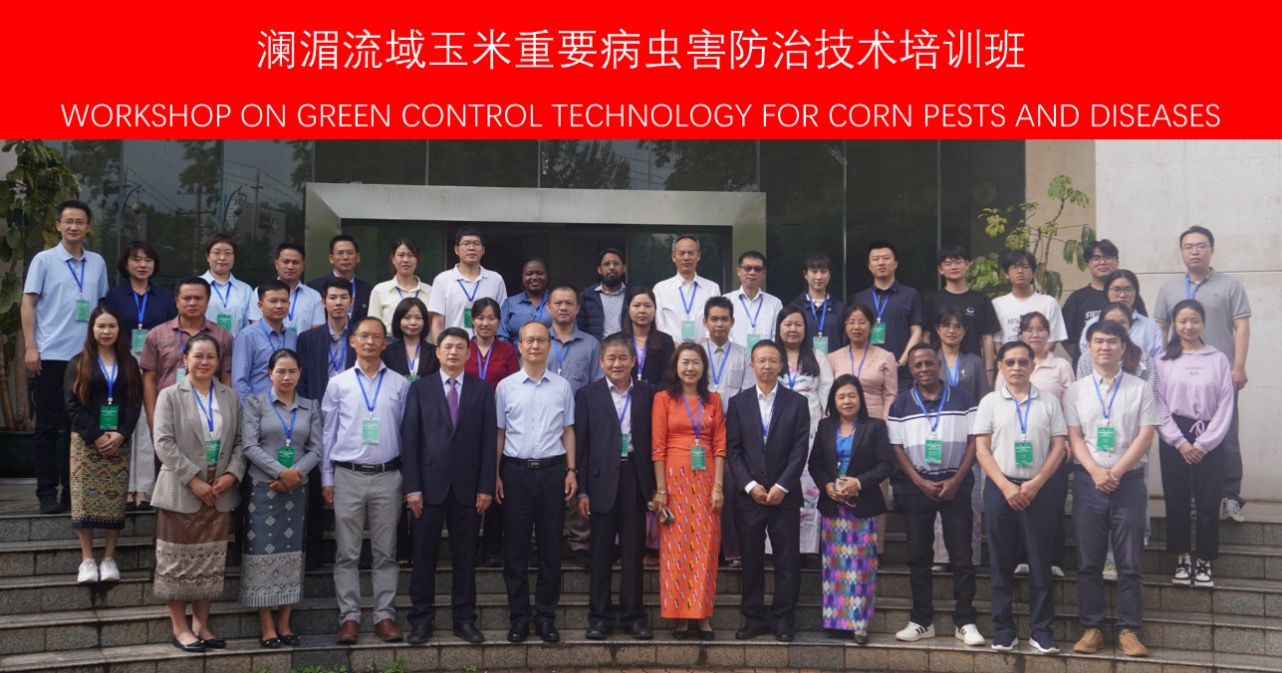 Workshop on Green Control Technology for Corn Pests and Diseases in the Lancang-Mekong Region successfully held in Kunming
Workshop on Green Control Technology for Corn Pests and Diseases in the Lancang-Mekong Region successfully held in Kunming -
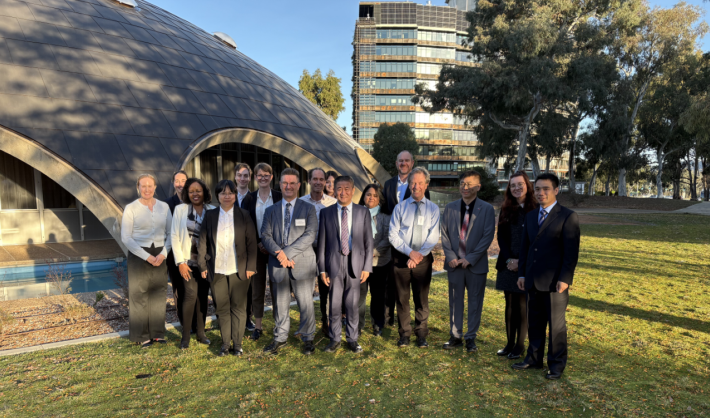 IPPCAAS Experts Visit Australia to Promote In-Depth China–Australia Cooperation in Plant Biosafety
IPPCAAS Experts Visit Australia to Promote In-Depth China–Australia Cooperation in Plant Biosafety -
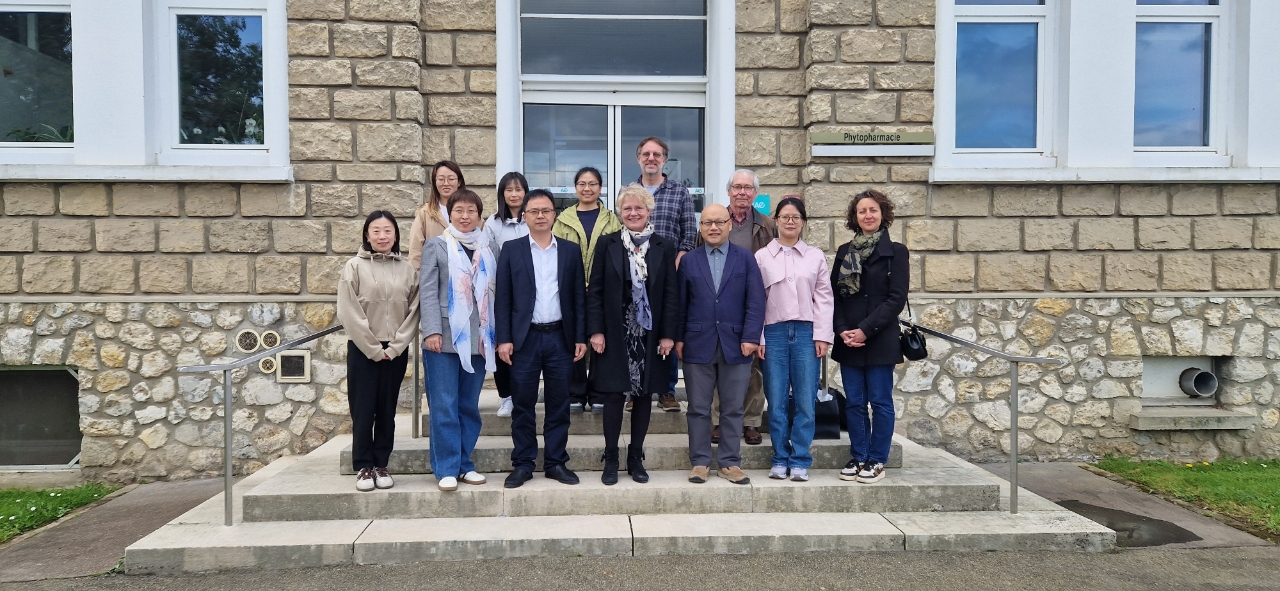 China-France cooperation in plant protection was further strengthened
China-France cooperation in plant protection was further strengthened
